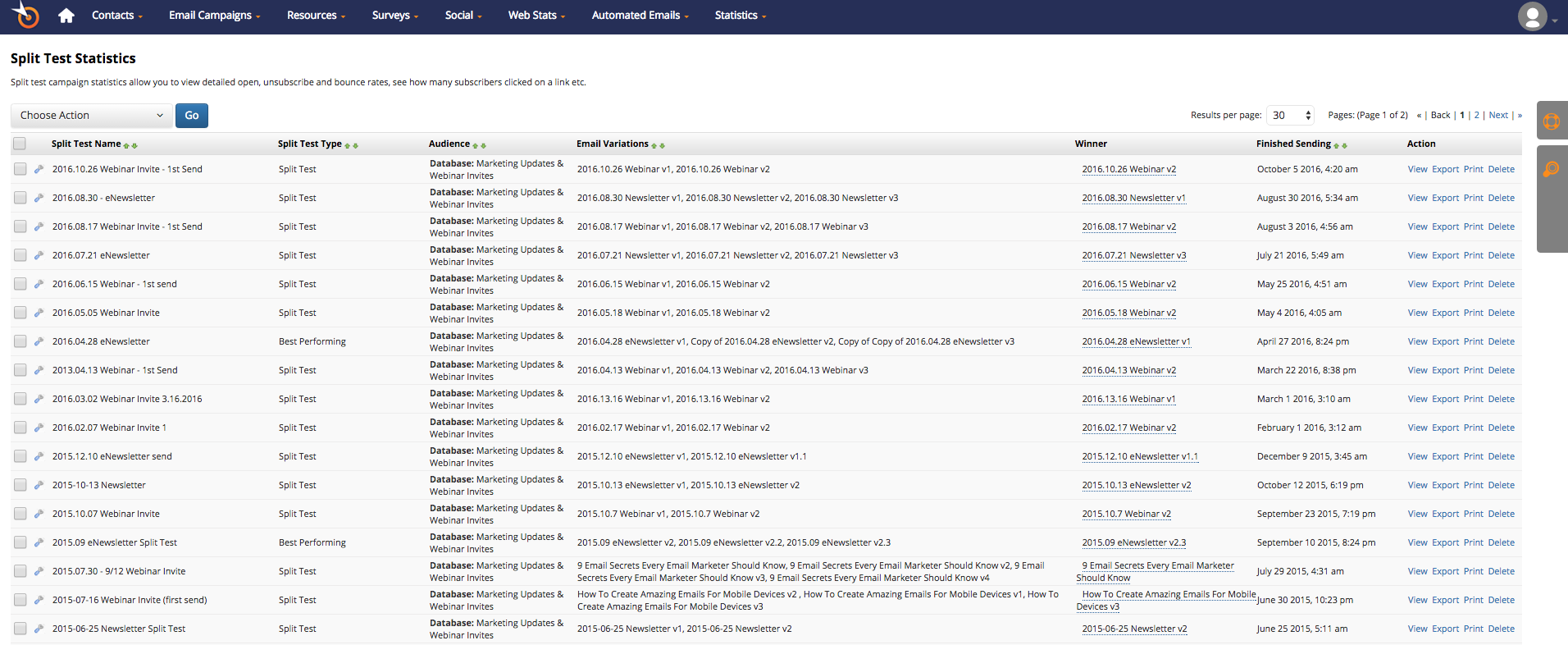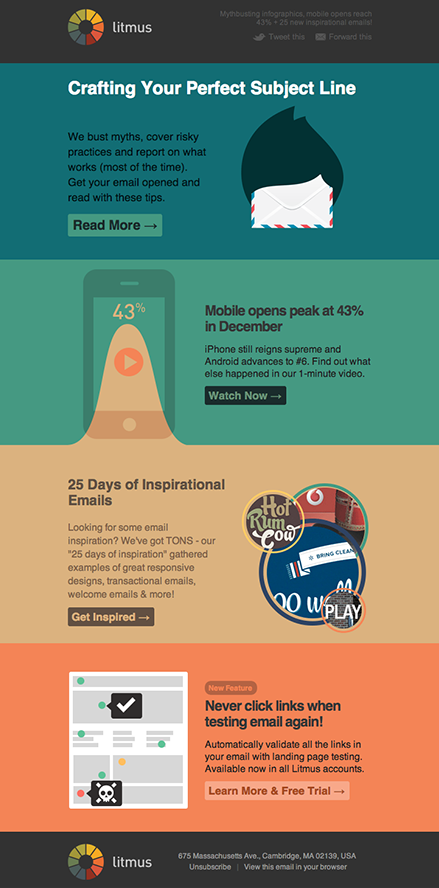The entire point of your email newsletter is to get people engaged with you and what your company offers.
Just writing down that primary goal can help you create more engaging content. Marketers can get get pulled into different directions with the multitude of topics they want to cover, the design and formatting of the message, and reviewing for grammatical errors. You’re accomplishing a lot and you want everyone to know about it, right?!
Believe me, I get it. All of this can take you away from the goal of creating an engaging email newsletter and clutter up an email that most will simply scan and delete. Those tasks are all necessary, yes, but as many of us marketers know, it can still be a bit distracting.
When creating an engaging email newsletter, it helps to decide on a few factors about your approach to get closer to meeting your newsletter goals:
How much to give up for an engaging email newsletter?
Do you include entire articles in your newsletter or do you share an enticing snippet to make readers click to read more? I’m not going to say one works better than the other because it depends on a number of factors.
It especially depends on what type of marketing goals you have. Do you want to get more traffic to your website? Well then by all means, link them to a landing page. If you have valuable content that you desperately want your readers to benefit from, then share as much as you want in your newsletter…to a point. Remember, the goal of email newsletters is engagement.
As a marketer, I personally enjoy both scenarios. If you’re in doubt, it doesn’t hurt to test it out! Email split testing is a very important benefit that email marketing systems offer and it simply makes you a better, more analytical marketer.
Pinpointe allows you to spit test up to 8 different variations of your campaign, and getting the results is as easy as a click.

You may be asking, “How can I test this when it really depends on the click?” Very good question and one that changes the position of giving up content, just slightly. When you share an entire article within a newsletter, add a call to action. Maybe that call to action is downloading more information via a report or whitepaper. Or maybe it is requesting a demo to see more about your product. Whatever it is, if people see the value in the content your giving up, this gives them a chance to take your relationship to the next level. Missing out on that is simply a no-win situation for both you and the reader.
If you decide teasing readers with your content is a better, more trackable approach, I hear ya! It has its benefits, there’s no doubt about that. You can see what links they click on and how interested they are in the various things you push out. On the other side of the spectrum, it also puts a ton of pressure in creating enticing email headlines, easy-to-scan sentence structures, and visually appealing (and preferably mobile) design.
That’s not to say it can’t be done. With a little more focus on those areas, many companies have had major success.
Below is a sample of an engaging email newsletter from Litmus.

Now, some companies even take email newsletter engagement to the next level. Let’s take www.5000bc.com, for example. They are a membership organization so instead of sending their valuable content in an email newsletter, they send out a teaser every week drawing members into what they call, “The Cave”. This is a password-protected and vetted forum that helps promote engagement in a safe place.
Try something similar by creating a landing page or LinkedIn group that is easier to manage other users. That “protected” space goes a long way so users aren’t inundated with people who are just trying to impress.
Get personal. Or get even more personal?
If you’re like most marketers today, you’ve added a level of personalization to your email marketing. You have a sense of who your contacts are, segment contact lists to the best of your ability, and try to keep those contacts updated on a regular basis.
There is a large percentage of companies playing the manual game because budget does not allow for a marketing automation solution. You don’t have to allocate your entire marketing budget just to get more personal. You simply need to implement and maintain the right tools, as well as develop strategic personas.
-
Tools: If you’ve been in marketing for a long time, you know it’s easy to acquire more tools than you actually need. They add up without adding real value.
Take the time to do an audit of all the tools you use for marketing and see which ones you actually use. It helps to think of your tools in terms of a marketing campaign. What do you use to create your marketing message? What tool sends out that message and then what is the call to action you want prospects to do?
Pay close attention to those that cause more headaches than benefits and streamline as needed. Once you have a list, write in the purpose and cost to your business each tool brings to help you decide. Using Microsoft Excel is obviously an easy way to accomplish this. Here’s a brief example…

You may need to migrate data into a new system, but do your research before making that leap to ensure it aligns with your marketing structure, company size, and goals. Take advantage of trials so you can see your data working in the new tools. For example, you can try out Pinpointe for 15 days free to see if its email marketing features work for you.
-
Personas: Jumping in to segment lists can backfire quickly if you have no plan or reason to what personas you are targeting. Persona development means looking internally and asking questions of your leadership, sales, and customer service teams to see who your perfect client may be. After those discussions, narrow it down to four or five personas that are easy to remember and then…dig deeper.
Pinpointe customers that align with those personas and give them a call. See what makes them tick. Ask how you can better serve them. Not only will you get a ton of valuable information, your customers will feel special and appreciated.
Once you have a strategic plan to the exact personas you are targeting, segmenting lists and creating content for that audience will be all that much easier.
As I mentioned at the beginning of this article, remember what your primary goal is for email newsletters. Get those readers engaged! After reviewing your content strategy, email marketing tools, and personas, you can finally take your engagement up a notch and reap the benefits of marketing done right!






